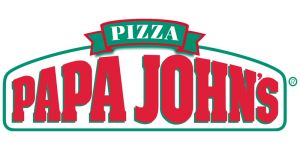What are the guidelines and best practices for setting up Final URLs in Google Ads?
When it comes to digital marketing, understanding the guidelines and best practices for setting up Final URLs in Google Ads is crucial for a successful campaign. Final URLs in Google Ads refer to the landing page URL that a user is directed to when they click your ad. Effectively managing these URLs enables you to accurately track and monitor your ad performance, ensuring you are maximizing the return on your advertising investment.
In addition to tracking and optimizing user experience, leveraging Final URLs in Google Ads can provide you with an efficient way to manage your ad placement and target specific audiences. With this strategy, you have the ability to laser target effective messages and competitive offers that can drive sales.
This article will provide insight into the guidelines and best practices for setting up Final URLs in Google Ads. We will discuss the different elements of a Final URL, the importance of using tracking parameters, and how to create URL tracking templates. Lastly, we will cover the impact of Final URLs on your Quality Score.
Instant SEO Checker + Score & Report
Enter the URL of any landing page to see how optimized it is for one keyword or phrase...
Guidelines for specifying Final URLs
When setting up Final URLs in Google Ads, it is important to understand the guidelines and best practices for setting them up correctly. In general, it is recommended that Final URLs include the domain and subdomain. This will ensure that the user lands on the correct page and that the URL is unique. Additionally, each Final URL should include all of the possible tracking parameters. If the same tracking parameters are used for multiple campaigns, they should have unique values to ensure that the user is tracked accurately.
Google Ads also recommends using Final URL templates, which will shorten the URL and make it easier to read. These templates can also be used to ensure that the necessary tracking parameters are included in all ads. Additionally, adding relevant tracking parameters to the Final URL template can help to provide valuable insights into which ads are performing the best.
Google Ads users should also ensure that their Final URLs and ad copy stay relevant to each other. This will help to ensure that users land on the correct page. Similarly, users should avoid using duplicate Final URLs, as this could result in the wrong landing page being displayed or tracked. It is also important to use unique tracking parameters to avoid miscalculation of the performance of different campaigns.
By following these guidelines and best practices for setting up Final URL, users will be able to ensure that their ads are set up correctly and that they can analyze their results accurately. This will help them to maximize their ad spend and increase their return on investment.
Google Ads Success Example
The Challenge: The Challenge: Increase new dental patients with better Google Ads campaigns.
Best Practices for Creating Final URLs
Creating Final URLs in Google Ads is a great way to track the success of your campaigns and optimize targeting to generate the best results for your business objectives. When it comes to creating Final URLs, there are certain best practices and guidelines you should follow.
When setting up a Final URL, you should always double check that it is working properly and that the link is send to the right page. You should also use parameters to track and measure the activity on your site and should avoid using redirects, as they can interfere with the tracking of the final URL. Additionally, it is best practice to avoid using a ‘www’ at the start of the URL, as this can create an inconveniently large number of URLs for tracking. Furthermore, you should avoid superfluous characters and extra words in the URL as these can hinder traffic to the site.
Final URLs should also be dynamic and editable, while still being unique. As such, it is best practice to use variables to create URLs for different users based on their interests. This kind of personalization can help create more accurate and in turn, more successful campaigns. Finally, it is important to avoid cross domain tracking, i.e. tracking an ad from one site to the landing page on a different domain, as this can lead to inaccuracies in tracking and reporting.
Overall, it is important to ensure that your Final URLs are configured correctly so as to avoid any issues and discrepancies. It is equally essential to follow best practices when designing them, which is why it is recommended to leverage conventions and guidelines from the Google Ads platform. Doing so can help to maximize the success of your campaigns and ensure that they track performance with accuracy and precision.
Using Final URL Templates
Using Final URL templates is one of the best practices for setting up Final URLs in Google Ads. Final URL templates allow advertisers to automatically build their Destination URLs by automatically replacing the Creative URL variables with predetermined values. For example, inserting {_mobilead_} into the Final URL for a creative offers a convenient way to utilize the same template across multiple broad match keywords that trigger different mobile landing pages. Final URL templates also help you easily manage all of your URLs that require multiple parameters. Utilizing a template saves you the time and effort of manually updating multiple URLs.
Final URL templates must be configured through the Final URLs field on the Ad level. You can configure a Maximum of 20 URL parameters and you must obey the ASCII characters set. Google campaigns can include destination URLs with parameters encoded as “utm” for Utm Parameters and other UTM parameters such as: Campaign Source, Campaign Medium, and Campaign Name. Utm Parameters and matching values can identify how customers were referred, which is a useful metric to track.
By utilizing Final URL templates, advertisers have the ability to simplify their process of setting up and optimizing campaigns. Final URL Templates are beneficial to simplify complex URLs with multiple parameters, they also allow marketers to identify which customers are directed to their landing pages from a certain campaign. Utilizing Final URL templates are a great way to make sure you use the right parameters from the start.
SEO Success Story
The Challenge: The Challenge: Design an SEO friendly website for a new pediatric dentist office. Increase new patient acquisitions via organic traffic and paid search traffic. Build customer & brand validation acquiring & marketing 5 star reviews.
Testing Final URLs
Testing Final URLs is an important step in setting up a successful campaign in Google Ads. It is important to ensure that all the URLs have been implemented and that they are properly functioning. After the URLs have been set up, the ads should be tested to make sure that they are working as expected. This can be done by loading the ads in an external browser and opening the landing page to make sure that it is being directed to the correct page. It is also important to make sure that all other features, such as Google Analytics or other tracking methods, are being correctly set up. Additionally, all URLs should be tested for accuracy. It is important to ensure that all of the tracking parameters have been implemented correctly and that all URLs are working as expected.
When testing Final URLs, ensure that the ad copy is also relevant to the landing page or website. If the two don’t match, the relevance rating of the ad may decrease, resulting in a lower Quality Score. Additionally, when testing Final URLs, make sure that there are no duplicate URLs or other errors. These errors can cause potential problems within the campaign, such as a decrease in performance due to the inability of Google’s algorithms to recognize the duplicate URLs as the same.
Overall, the best practices and guidelines for setting up Final URLs in Google Ads involve making sure that all URLs are set up properly, that the landing page is relevant to the ad copy, that all URLs are tested for accuracy, and that there are no duplicate URLs present. By following these guidelines and best practices, you can ensure an effective and successful Google Ads campaign.
Jemsu has been a great asset for us. The results have grown at strong positive linear rate. They have been extremely accessible, flexible, and very open about everything. Natalya is a star example of how to work with your accounts to drive them forward and adjusts to their quirks. Jaime is able to clearly communicate all of the work that is being done behind the scenes and make sure that all of my team is understanding.
I couldn’t be more pleased with my JEMSU Marketing Team!
Julia, Tamara, Joelle and Dally have exceeded my expectations in professionalism, creativity, organization, and turn around time with my Social Media Management project.
I have thoroughly enjoyed sharing my journey with this team of empowered women!
Thank you JEMSU! Your team designed and launched my new website, and developed strategies to drive traffic to my site, which has increased my sales. I highly recommend your Website & SEO Agency!
Jemsu has always been professional and wonderful to work with on both the SEO and website design side. They are responsive and take the time to explain to us the complicated world of SEO.
Jemsu is an excellent company to work with. Our new website blows away our competition! Unique, smooth, and flawless. Definite wow factor!
The folks at JEMSU were excellent in designing and launching our new website. The process was well laid out and executed. I could not be happier with the end product and would highly recommend them to anyone.
Jemsu is a great company to work with. Two prong approach with a new site and SEO. They totally redesigned my website to be more market specific, responsive, and mobile friendly. SEO strategy is broad based and starting to kick in. My marketing will also be adding Facebook and Google ads in the coming weeks. Thanks for your all you hard work.
JEMSU has wworked with our team to create a successful campaign including incorporating an overall rebranding of our multiple solutions. The JEMSU team is embracing of our vision and responds timely with life of our ideas.
JEMSU is great company to work with. They listen & really work hard to produce results. Johnathan & Sasha were such a big help. If you have a question or concern they are always there for you.
I would definitely recommend them to anyone looking to grow their company through adwords campaigns.
Jemsu have exceeded our expectations across all of our digital marketing requirements, and I would recommend their services to anyone who needs expertise in the digital marketing space.
JEMSU was able to quickly migrate my site to a new host and fix all my indexation issue. I look forward to growing my services with JEMSU as I gain traffic. It’s a real pleasure working with Julian and Juan, they’re both very professional, courteous and helpful.
JEMSU is incredible. The entire team Is professional, they don’t miss a deadlines and produce stellar work. I highly recommend Chris, Rianne, and their entire team.
We’ve been working with JEMSU for about five months and couldn’t be happier with the outcome. Our traffic is up and our leads are increasing in quality and quantity by the month. My only regret is not finding them sooner! They’re worth every penny!
Relevancy between Final URL and Ad Copy
It is important to make sure that the final URL and ad copy are relevant to each other. This should be done in order to keep the searchers journey consistent with both the ad copy and the page that is being directed to. Creating a relevant and appropriate experience to the searcher will create more success in the click-through rate, which is the total number of impressions divided by total number of clicks of the ads. When the experience is not appropriate, it won’t lead to quality clicks.
To ensure that the experience is consistent with the ad copy and the page that is being directed to, make sure that the keywords that are used in the ad copy are used on the page in the form of text, headline or copy. The text, headline or copy should then be congruent with the ad copy. For example, if the ad copy contains the keyword “sunglasses”, then the content on the page should focus on sunglasses or something related.
The guidelines and best practices for setting up a Final URL in Google Ads is that the page with the final URL should be optimized and concise. The content should be accurate and representative of the ad, the ad group and the campaign and should contain the same type of keywords as from the ad copy. The page should be free from any kind of errors as broken links, duplicate URLs, page not found/error messages, wrong redirects and slow page loading. Additionally, the page must adhere to Google Ads policies and not contain any offensive language.
SEO Success Story
The Challenge: Increase dent repair and body damage bookings via better organic visibility and traffic.
Duplicate final URLs and Unique Tracking Parameters
When creating Final URLs for Google Ads, it is important to have unique tracking parameters. This means that each URL should only be used once and lack any duplicate URLs. A common mistake is to use a single URL multiple times, with different pieces of tracking information. This can have several negative impacts, including an increase in the cost of an ad, as the URL is evaluated multiple times (thus spending more money) and traffic data may become distorted. Additionally, if the same URL is being used across multiple campaigns and ad groups, performance metrics such as conversion rates can be grossly misrepresented.
Another important consideration when setting up Final URLs is to have unique tracking parameters. Tracking parameters can help to understand the performance of a particular ad and can be used to adjust bids or targeting to better improve the ad’s performance. It is important to have unique tracking parameters so that each URL can be tracked and evaluated separately. This ensures that the data gathered from each one is accurately displayed and lets advertisers optimize their campaigns and ad groups on a more granular level.
In conclusion, when setting up Final URLs for Google Ads, it is important to follow the guidelines and best practices for setting up Final URLs: use unique tracking parameters and URLs, have relevancy between the copy of the ad and the Final URL, use Final URL templates, and test Final URLs to ensure they are working properly. Following these guidelines and best practices will help advertisers to get the most out of their ads and ensure that their campaigns are running optimally.
FAQS – What are the guidelines and best practices for setting up Final URLs in Google Ads?
1. What is a Final URL?
Answer: A Final URL is the actual web address that a user is taken to when they click an ad in Google Ads.
2. What is the difference between a Final URL and a tracking template?
Answer: A Final URL is the actual web address that a user is taken to when they click an ad in Google Ads, whereas a tracking template is the parameter that is added to the Final URL to collect additional data.
3. When should I use Final URLs?
Answer: Final URLs should be used when an ad is created to direct customers to a specific landing page where they can take an action on the business’ website.
4. What is the correct format for Final URLs?
Answer: Final URLs should be formatted as follows: ‘PROTOCOL://DOMAIN/PAGE’. For example, ‘https://example.com/landingpage’.
5. What are the guidelines for setting up Final URLs?
Answer: The guidelines for setting up Final URLs include ensuring that the URL is in the correct format, that the domain is correct and that the landing page works properly. Additionally, ensure the URL points to the correct destination and does not lead visitors to a 404 page.
6. What is the recommended length for Final URLs?
Answer: The recommended length of a Final URL is up to 1024 characters including any domain and any UTM parameters.
7. Are redirects allowed in the Final URL?
Answer: Redirects are allowed in the Final URL as long as the redirect is approved by Google Ads and does not lead a customer to a 404 page.
8. How do I make sure that my Final URLs are linked correctly?
Answer: The Final URL should be tested to make sure that it is linked correctly and that the landing page is working properly. Additionally, any parameters used should be tested as well.
9. How can I track the performance of my Final URLs?
Answer: Performance of Final URLs can be tracked by analysing the click-through-rate (CTR) and conversion rate (CVR) of the URLs.
10. Why is it important to set up Final URLs correctly?
Answer: It is important to set up Final URLs correctly as it can have an effect on the performance of the ad and the user experience. Additionally, incorrect URLs may be disapproved by Google Ads.
SEO Success Story
The Challenge: Increase new dental patients with better organic visibility and traffic.















